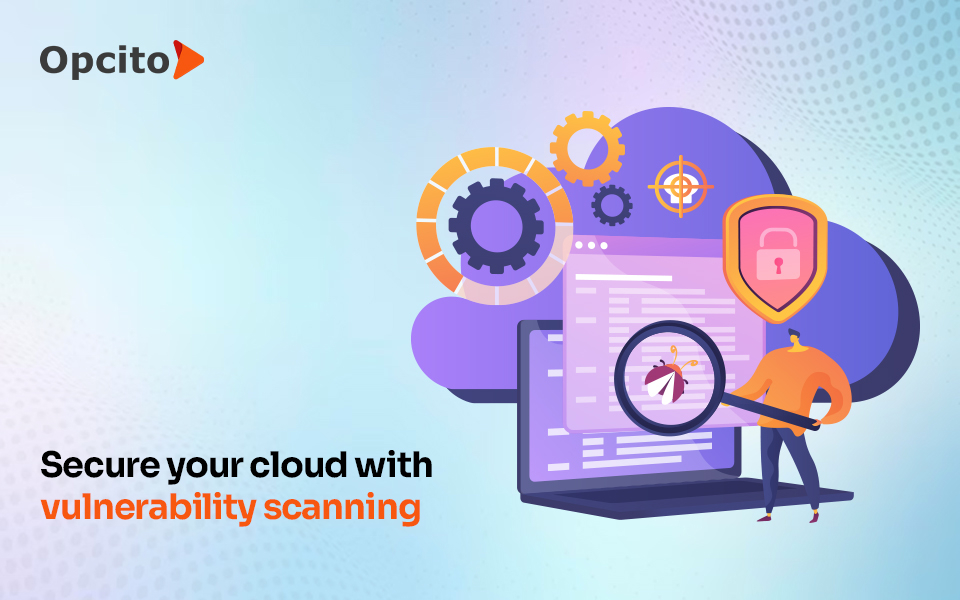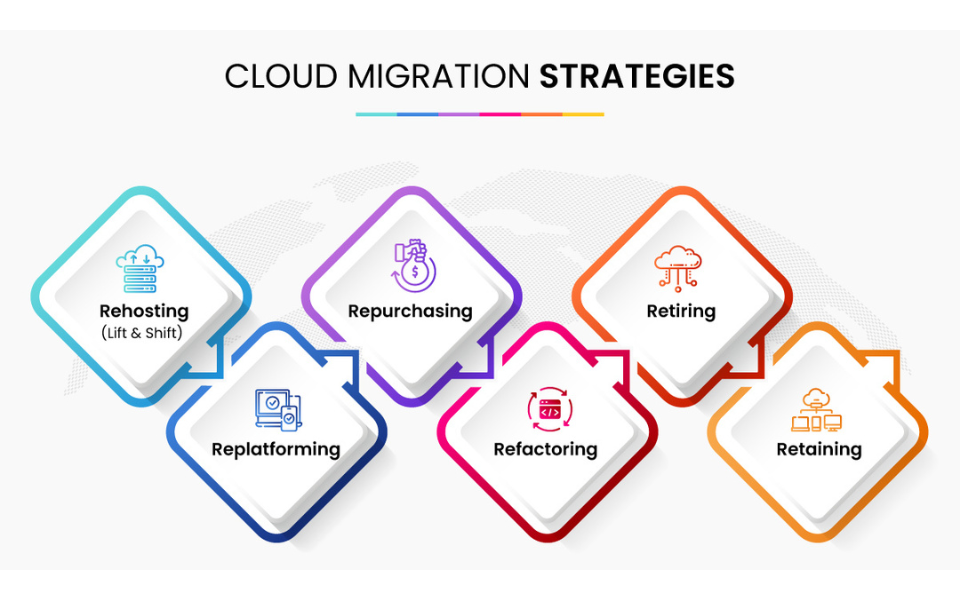With the increasing use of cloud computing, securing our cloud systems from potential threats and vulnerabilities has become extremely critical. Data breaches are becoming increasingly common, and they occur because of software bugs, configuration errors, or poor access control management. Due to the growing size of cloud environments, it is becoming almost impossible for humans to oversee and manually scan for system threats in detail. Furthermore, human errors are also among the leading factors of cloud security breaches. So, what are organizations doing about it? How are they stepping up their security game? A research by MarketsandMarkets predicts that the cloud security market size is expected to rise from USD 41 billion in 2022 to more than USD 77 billion by 2026.
Cloud security has multiple approaches and practices to it. A good mix of approaches heightens the security of cloud applications. Let's look at one of the most important aspects of cloud security - vulnerability scanning. An effective cloud vulnerability scanner can significantly increase security by identifying vulnerabilities that attackers could exploit. Automated vulnerability scanning allows for increased vigilance and efficiency and with the right vulnerability management approach, a secure cloud environment can be created without sacrificing operational speed. Let us take a closer look!
What is cloud vulnerability scanning?
Cloud vulnerability scanning uses automated tools to identify and evaluate security weaknesses and flaws in a cloud environment. These automated tools scan the cloud infrastructure and applications for potential vulnerabilities, misconfigurations, and misconfigurations that cyber attackers can exploit. It is an essential part of cloud security and helps organizations maintain the integrity, confidentiality, and availability of their data and resources in their cloud ecosystem.
Types of vulnerability scans
- Network-based scans: Network-based vulnerability scanners identify potential security threats and vulnerable systems on wired or wireless networks. They can detect unknown or unauthorized devices and perimeter points, such as unauthorized remote access servers or insecure connections to the business. They play an integral role in maintaining network security.
- Host-based scans: Host-based vulnerability scanners aim to identify vulnerabilities in servers, workstations, or other network hosts and offer greater visibility into scanned systems' patch history and configuration settings. These tools can also provide insight into the potential damage that insiders and outsiders can do once some level of access is granted to a system.
- Web application scans: Applications vulnerability scanners identify known software vulnerabilities and incorrect configurations in web or network applications. They test websites for potential attacks like cross-site scripting, where malicious data is injected into applications to manipulate trusted data by users.
- Database scans: Database scanners detect vulnerabilities in a database to protect it from malicious attacks. They search for weak points that allow attackers to control data servers, manipulate sensitive data, or pivot to other parts of the network. Risk and vulnerability assessment may be mandatory to comply with regulations depending on the industry. For instance, the HIPAA security rule mandates healthcare organizations and their associates to perform periodic risk assessments.
- Port scans: Port scanners are a type of tool that can identify open ports on network servers by sending connection requests to them and analyzing the responses. Malicious actors may also use these scanners to identify open ports and deliver malware or ransomware. Identifying and addressing open port vulnerabilities before attackers identify them is crucial in vulnerability assessment, as they can exploit these vulnerabilities to gain unauthorized access to systems.
Vulnerability scanning as a part of vulnerability management
Vulnerability scanning, though a vital part of vulnerability management, is not enough. Scanning only reports on the vulnerabilities found and does not go further. To manage vulnerabilities effectively, you must prioritize them based on their impact on your business and add them to your remediation list. Always keep these in mind:
- Understand the criticality of a vulnerability to prioritize the remediation process. You need to evaluate the potential impact on the business if a vulnerability is exploited, such as data theft, system downtime, or regulatory penalties.
- Assessing the ease of exploitation of a vulnerability is essential to gauge the likelihood of a successful attack. You must determine if there are known exploits that can be efficiently executed or publicly available tools that automate the attack.
- Existing security controls, such as firewalls, access controls, or intrusion detection systems, can reduce the risk of exploiting a vulnerability. Therefore, evaluate the effectiveness of these controls and identify any gaps that need to be addressed.
Features that a vulnerability scanner must have
These points will help you understand the essential aspects that a vulnerability scanner must possess to get the job done.
- Coverage capabilities: The scanner should cover a wide range of vulnerabilities, with both breadth and depth, to identify potential system threats. Furthermore, the scanner should provide scanning with credentials and be customizable to include or exclude specific pages from the scanning process. Advanced scanning with plugins, feeds, and intelligence from manual security assessment can also enhance the scanning process.
- Supports leading cloud providers: The vulnerability scanner must support multiple cloud environments to cover all cloud-based systems – especially the leaders like GCP, AWS (Amazon Web Services), and Azure, which organizations commonly use. By supporting these providers, the vulnerability scanner can provide a comprehensive view of the vulnerabilities across all cloud-based systems, ensuring no critical vulnerabilities are missed.
- Asset discovery: Automating asset discovery is a critical feature that should be included in any reliable vulnerability scanner. With the help of this feature, the scanner can automatically search for IT (Information Technology) assets on the network, making it easy to identify any new or previously unknown assets. This can be especially useful when identifying and securing unpatched IoT (Internet of Things) devices that end users may bring onto the network, as these devices can pose a significant threat if left unchecked. By automating asset discovery, organizations can ensure that they know all the assets on their network and take the necessary steps to secure them.
- CI/CD integration: CI/CD integration is crucial for vulnerability scanners to ensure that vulnerabilities are detected and addressed quickly in real time. Integrating the scanning process into your continuous integration and deployment pipelines allows you to automate the scanning process at every phase. This integration helps developers and security teams identify and remediate vulnerabilities early in the development process, preventing issues from becoming more significant problems down the line. Overall, CI/CD integration helps improve vulnerability management's efficiency and effectiveness by streamlining the process and working proactively.
- User-friendly interface and customizable dashboards: A vulnerability scanner should also have a user-friendly interface. Access to customizable dashboards makes it easier for security teams to visualize and understand the scan results, prioritize vulnerabilities, and take necessary remediation actions. With an intuitive interface, the scanner can help improve the efficiency and effectiveness of vulnerability management efforts.
- Compliance-specific scans: Compliance-specific scans are critical for companies that must meet regulatory requirements and standards. These scans are designed to check for vulnerabilities that may put data at risk, such as personally identifiable information (PII). Compliance-specific scans can help organizations comply with HIPAA, PCI-DSS, and GDPR (General Data Protection Regulation) and other such regulations, and avoid fines, legal action, damaged reputation, and sanctions.
- Detailed reporting and remediation support: Detailed reporting is important because it provides comprehensive information about the vulnerabilities detected. In addition to identifying vulnerabilities and root causes, a useful tool should also provide support for remediation. Detailed reporting allows organizations to track their progress over time through actionable intelligence. It also helps track the effectiveness of their security measures and improve their overall cloud security posture. Organizations can proactively protect their cloud-based systems by getting access to detailed reports.
Best practices of cloud vulnerability scanning
- Scan regularly: Conduct regular vulnerability scans to identify new vulnerabilities and ensure the system remains secure. Determine the frequency of scans based on your network architecture and device impact on the network.
- Assign owners: Assign an asset owner to each critical asset responsible for patching the device/service and establishing accountability.
- Document all scans: Schedule scans using an approved timetable and document them. Reports should be readable to non-technical management too.
- Keep software updated: Ensure all the latest security patches are installed.
- Follow a risk-based approach: Prioritize vulnerabilities based on severity and potential impact on the system.
- Collaborate with security teams: Ensure security teams and the leaders are on the same page.
- Establish a remediation process: Assign a priority and time period for each vulnerability discovered, including the required remediation steps. It is also good practice to document the remediation process.
Cloud security is serious business
In conclusion, vulnerability scanning is a crucial aspect of cloud security that helps identify potential threats and vulnerabilities in the cloud environment. When selecting a suitable scanning tool, it is essential to look for features that meet the organization's needs and provide comprehensive coverage, real-time scanning, and automated remediation capabilities.

























